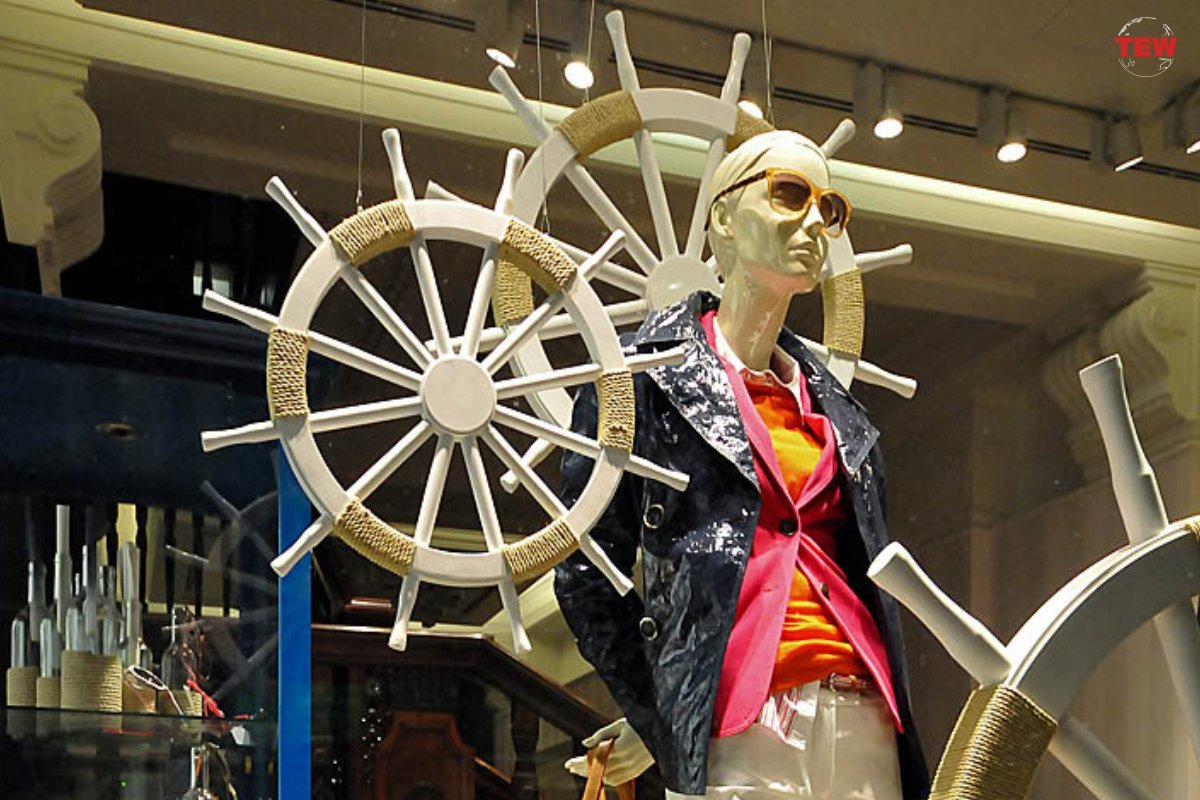(Source-tommyxgigi)
After a decade of strong growth, Tommy Hilfiger Corporation suffered a significant decline in sales and profits in 2000. Shareholders were worried when the company’s stock price decreased rapidly. That means favorite stock on Wall Street was now facing challenges.
In 1985; the Tommy Hilfiger brand was established by Thomas Jacob Hilfiger. He found immediate success by appealing directly to the hip-hop community and expanding its line of products. However; it had grown too popular and lost track of the market. The reduction in the prices negatively impacted the reputation of the company for good quality, while its image needs to be simplified.
In the years 2001 and 2002, the Tommy Hilfiger brand underwent major challenges which included a decrease in revenue and the departure of some of its top leadership. As the revenue fell down the CEO had to decide on an organic restructuring over regaining the lost ground in the US market.
Today after facing tons of challenges, Tommy Hilfiger has grown to become an apparel brand with 1,000 stores in over 90 countries worldwide. The company has flagship stores in major cities such as New York, London, Paris, and Milan, and is currently actively pursuing Japan and Asia as vulnerable future markets.
This case study delves into the journey of Tommy Hilfiger, examining its strategic initiatives, marketing endeavors, and global expansion efforts.
Brand Identity and Positioning: The success of Tommy Hilfiger is a result of its distinct brand identity and positioning which have made it outstanding in terms of these two things. This brand has always been associated with classical America brought out by merging old-fashioned preppy looks in a more contemporary manner. The use of vivid colors with fearless stripes alongside its iconography (comprising reds/blues) has made Tommy Hilfiger manage to capture the taste of its customers everywhere around the world. The company has found its way into the crowded fashion industry by using the image of the American lifestyle that people dream about.

Marketing and Celebrity Endeavors: Tommy Hilfiger has made its strategic marketing campaigns and celebrity advocacy its key aspects. For it to be seen clearly by many people and be appealing to different groups of people, this brand connects itself with prominent figures in music, sports, and entertainment. Tommy Hilfiger made several remarkable associations with artists such as Aaliyah, Beyoncé, The Chainsmokers, and sportspeople such as Rafael Nadal and Lewis Hamilton which have increased its popularity among youthful populations. Besides, Tommy Hilfiger has stayed popular in showbiz thanks to numerous mentions on television as well as appearances in movies making it an important icon in others’ lives.
Retail Expansion and E-Commerce: Tommy Hilfiger has been to an aggressive retail expansion strategy, setting up a global network of brand stores, department store counters, and factory outlets. Its brick-and-mortar shops in major fashion capitals worldwide, as well as its e-commerce site, allow it to reach out to the market through various channels. Tommy Hilfiger is embracing digital and has used technology to make shopping on the internet more convenient.
This includes suggestions that are customized just for you, a feature that lets you try on clothes virtually as well as various payment options that you can make without encountering hustles. Furthermore, it has embraced omnichannel retailing to cater to changing customer preferences and prepare itself for growth in the era of the internet.
Story Behind The Brand Tommy Hilfiger: It’s Beginning
Tommy Hilfiger, the guy behind the brand, is from Elmira, New York state had lived there while thinking for himself how he would one day become a big musician like his idols from the 1960s. He realized that the people in the town where he lived needed nice clothes similar to those worn by famous musician Elvis Presley among others during those years. It was only 17 years when Tommy after saving $150 earned from a gas station job decided to purchase bell bottoms from the famous city of New York, afterward he and his friend Larry Stemerman sold them to fellow college mates in their locality.

Same year after opening the first shop named ‘People’s Place’ in the basement, they instantly attracted the attention of youngesters who were interested in music and fashion, hence making it grow very fast; by the time it was ending, they had made sales that amounted up to one million dollars thereby running ten other outlets around colleges’ vicinity.
In 1970 things took a downturn, more competitors came in, the economic situation was quite problematic, and generally poor leadership meant failure. This was the year when People’s Place went into liquidation and consequently, all the outlets belonging the Jimmy Hilfiger were shut down. Later on, he admitted that he had lost focus on the business side of things, leading to the downfall of his venture.
The Benefits: Delivering a Scalable, Digitally Engaging Buying Experience
- Accelerating sales, and enhancing efficiency: With Couchbase(Couchbase is the NoSQL cloud database platform for business-critical and AI-powered applications), Tommy Hilfiger has accelerated the sales process. The company is also recording sales increases, with pre-fall sales for the Middle East, Africa, and the Netherlands growing.
- Defining the present and future of the showroom: Tommy Hilfiger said,” Our Digital Showroom revolutionizes the buying and selling journey for our retail customers and internal sales teams. We are passionate about providing our clients with the best service, experience, and quality. Our Digital Showroom concept completely reimagines the traditional buying approach and establishes a new fashion industry benchmark for business-to-business sales.”
- Delivering anywhere, anytime engagement: With the support of Couchbase, Tommy Hilfiger can develop and deliver a universally engaging experience regardless of device, location, or connectivity. The company can add, access, and combine data in real-time due to Couchbase’s NoSQL architecture, so retailers can not only inspect, modify, and create orders as they browse collections, but also place their final order and arrange delivery immediately.
Tommy Hilfiger can continuously add to the number of collections available through the Digital Showroom and expand the concept to locations across the world.
Challenge:

A partnership that overcomes differences in language, time, and business practices between Europe and Japan
Although the project started in 2011, in November there were some hurdles it encountered. The contrast between Japan and Europe is pronounced. Here, we can mention not only language but also operational models of companies, logistic systems, market exchange processes, and other peculiarities.
Hence, the SAP system required more amendments than anticipated and none of the Head Office staff could address all distinctions. Arne Tajlma from SVO ICT in Tommy Hilfiger Europe remarked, “ABeam has done similar projects well in the past. They are quite aware of how businesses are run in Japan. In addition, these guys are specialists in SAP applications. Even though Japan speaks a different language from Europe, has different schedules, and they do things differently“. Japan and Europe have separate languages, distinct schedules, and unique ways of doing business. But they still regarded them as a good partner because they believe in the ability of ABeam to support and solve any issues.
Solution:
SAP as the platform for global integration, interfacing with external systems
The standard SAP solution for the apparel industry, known as AFS, was used for global integration. Japan was unique hence requiring a different approach from what was being done elsewhere in the world, and this system failed to fully cater to their needs and expectations. Europe adopted blanket policies under one software package while it was mandatory for Japan to do different things in areas like transport and shops.
Beginning AFS, being the standard SAP solution for the apparel industry across the globe got used but it did not satisfy well enough to enable Japan’s distinctive modes of operations. Unlike in Europe where everything is found under one system i.e. SAP, In Japan logistics needs to have its system as well as store operations because of this we cannot implement what had been done in Europe.
“Takashi Kato, a project manager in charge of business planning, analysis, and IT, has more insights: “In Japan, they have a customary trading system called shoka-shiire, where retailers await payment for goods supplies until they are sold over the counter to customers, a situation also referred to as ‘consignment sales’ or ‘sale-based rent. Additionally, it was difficult to coordinate outsourced processes.”
Conclusion:
Jimmy Hilfiger began in a small way but grew into a serious force in fashion. Born in 1985, Thomas Jacob Hilfiger founded it and it became known for its preppy style and cool partnerships. Though it had problems such as too much visibility and being in a crowded field over the years, it never threw in the towel. The brand got into partnerships with celebrities for promotion purposes and thus managed to build an international image besides embracing technology. Utilizing expertise was a solution to problems like culture shock.
Today, Tommy Hilfiger is still a big deal in the world of fashion, showing that one can achieve anything through creativity and hard work.





